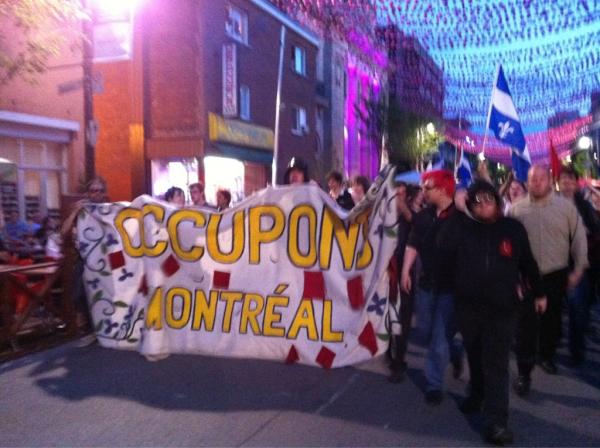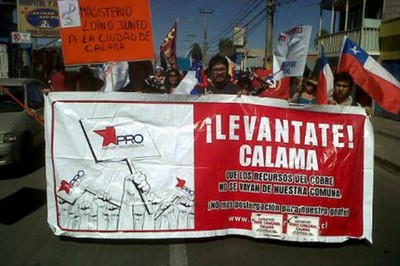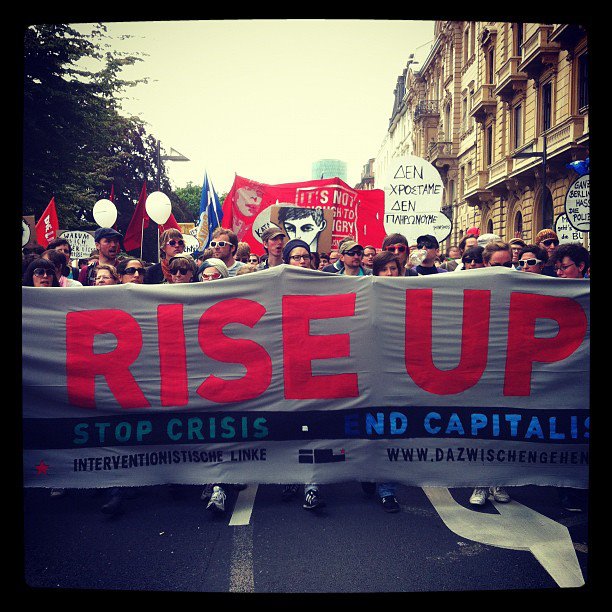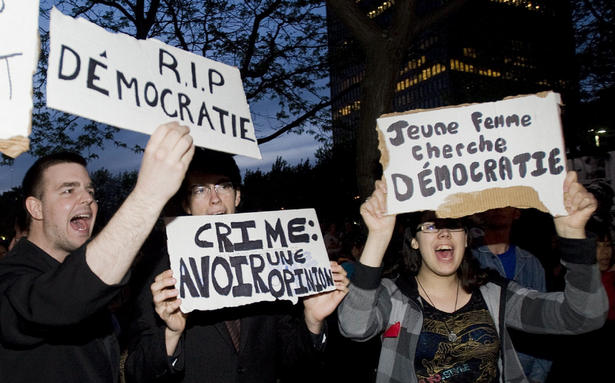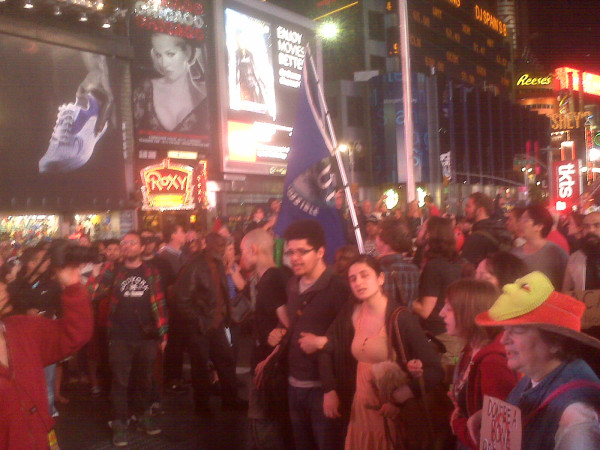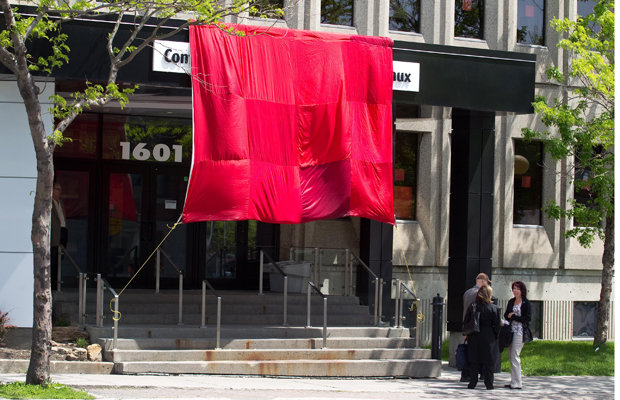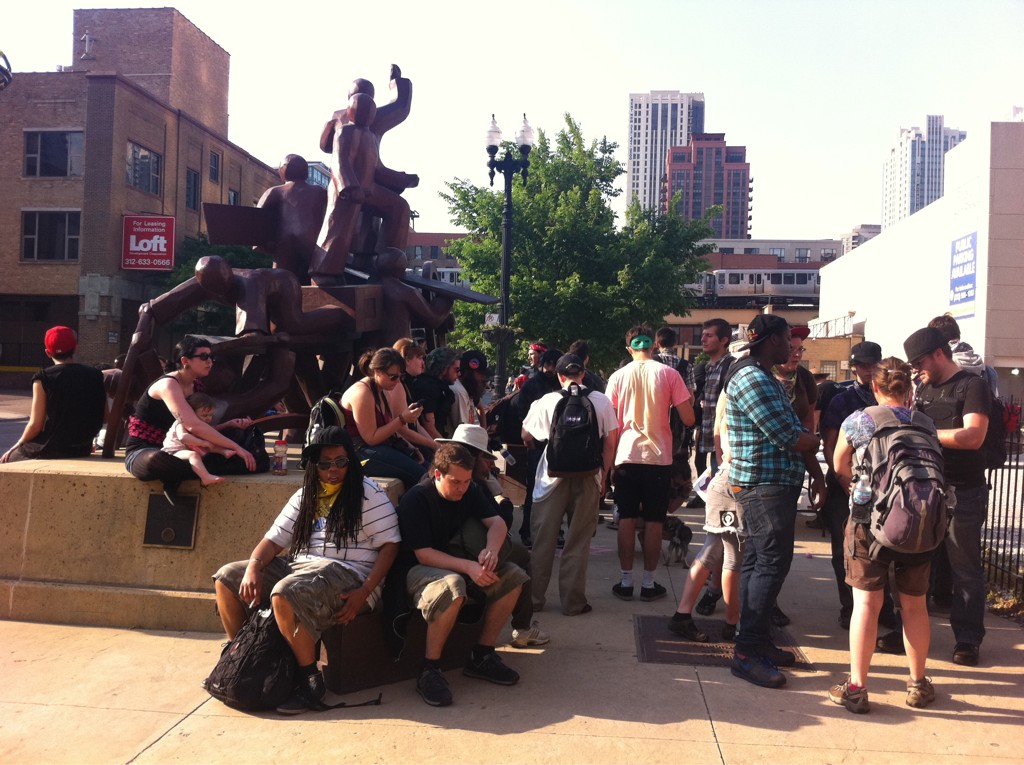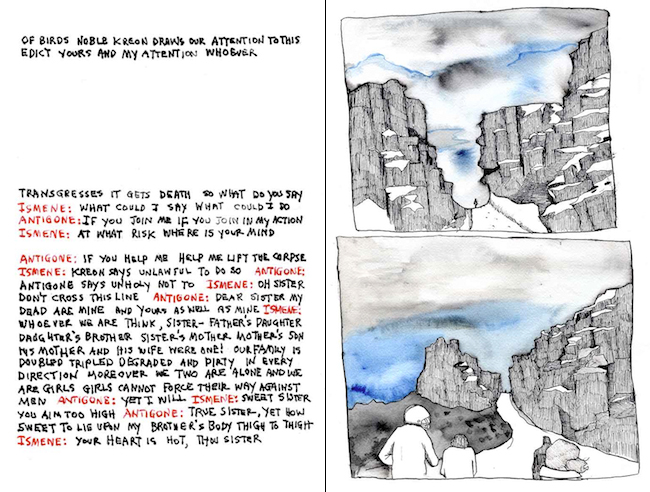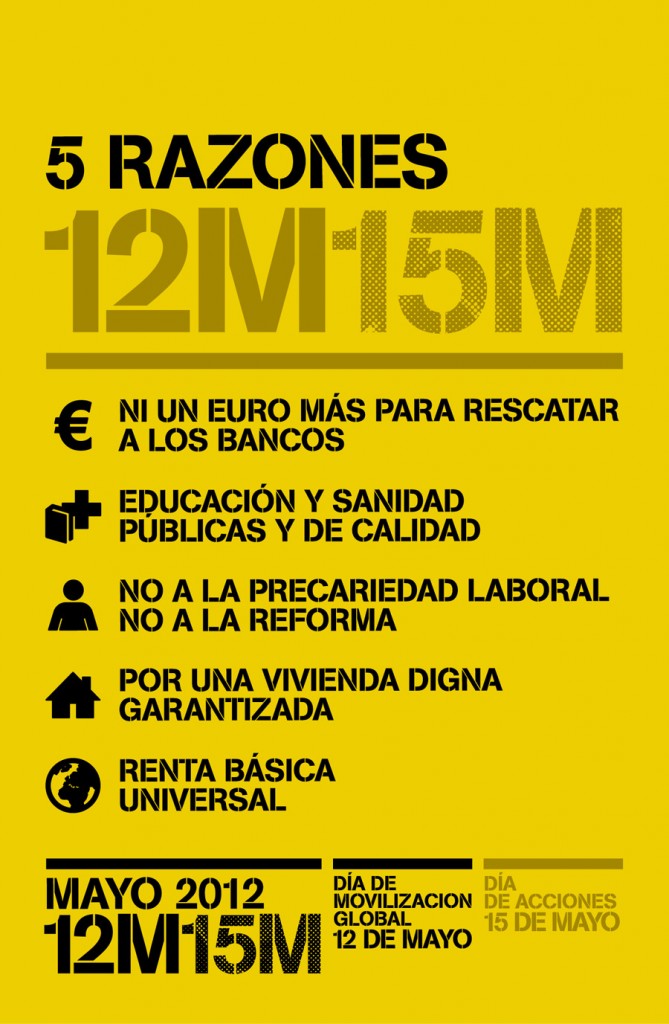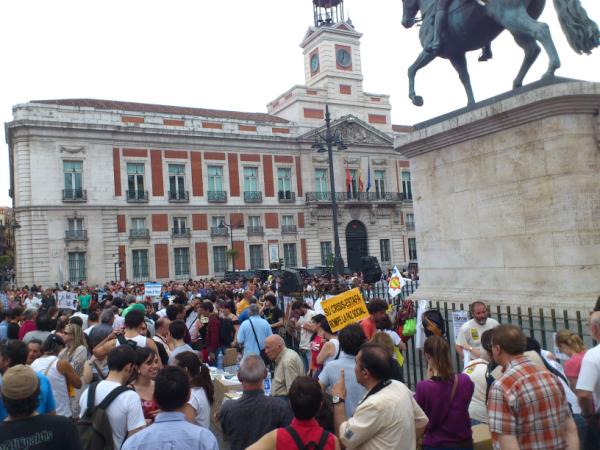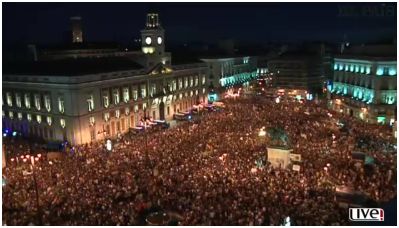A qui la rue? A nous la rue? Or as we say down here: Whose streets? Our streets! As ever it sounds better in French, smarter even. Tomorrow is the 100th day of the student strike in Quebec that has now been the subject of the state of exception Loi 78. In a way, we can be grateful for this resort to violence because it clearly reveals that the use of state-sanctioned force in defense of debt extends from sovereigns to students.
The student resistance is remarkable both for its foresight into the disaster of student debt and its fortitude against police violence. There were 308 arrests yesterday and tonight’s action is just getting underway.
The acceleration of this repression has come in synchronization with the increased drumbeat against Greece. Increasingly, it is said by “sources” that Greece must leave the euro, perhaps even the European Union, should it dare to consider debt abolition. Such discourse seeks to transform the moral discourse of debt into sovereign enforcement. It relies on the absurdity that Greece should cut its social services in order to borrow more money to repay debts incurred at the suggestion of the very bankers who now cry foul. Canadian students are now subject to this violence in advance–they are being compelled to accept future debt at the cost of present violence.
Perhaps we have not fully recognized the value of this struggle until now. Making up for lost time, there has been an impressive rallying of solidarity actions in the past few days.In New York tomorrow, there is a rally at the Quebec government offices at Rockefeller Plaza (access from 48th St) at 2pm. This will be followed by a march leaving from Washington Square Park at 8pm.
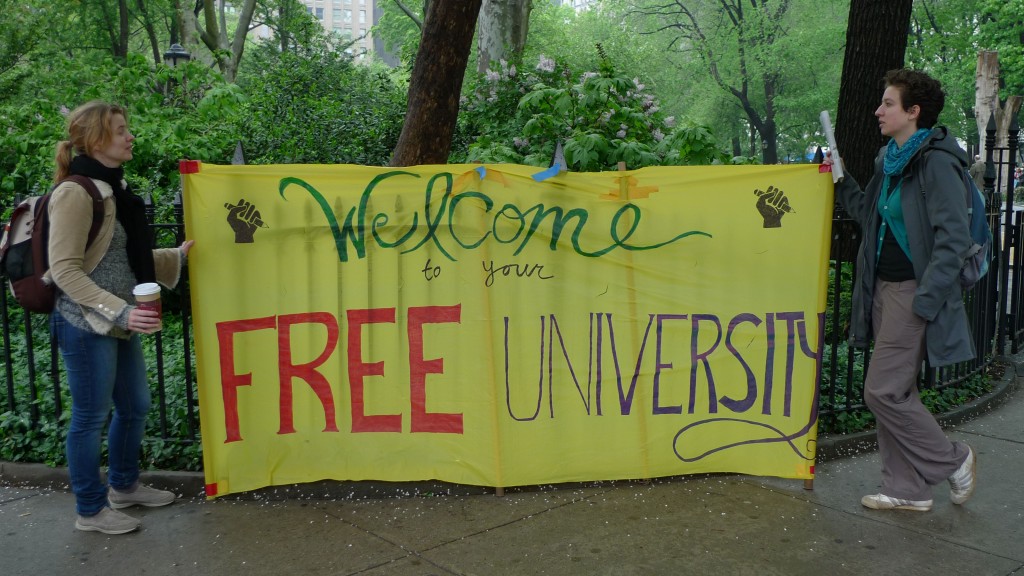 The Free University group happened to be meeting yesterday evening and it was quickly decided to hold a Pop-Up Free University tomorrow in the time in-between. So there’s banner and sign-making at 5pm in Washington Square Park and teach-ins, open forums, skill-shares and other events from 6-8pm.
The Free University group happened to be meeting yesterday evening and it was quickly decided to hold a Pop-Up Free University tomorrow in the time in-between. So there’s banner and sign-making at 5pm in Washington Square Park and teach-ins, open forums, skill-shares and other events from 6-8pm.
First and foremost, there’s the opportunity to learn more about what’s happening in Quebec.
I’m leading a discussion for Occupy Student Debt on the connections between the student debt crisis and the state of exception. We’ll reflect on how student debt has metamorphosed from an issue of personal responsibility and morality, discussed only in private, into a matter for the exercise of the supreme force of law. Loi 78 gives the Quebec state the power to claim all actions that question debt feudalism.
In this action, Quebec has highlighted the close proximity of debt and state violence, as David Graeber has pointed out:
Modern money is based on government debt and governments borrow money in order to finance wars.
This apparatus has been vastly expanded since the end of the Cold War to no very good effect internationally. Even in the Counterinsurgency New York Times, there has been a more-or-less open recognition recently that the war in Afghanistan is an expensive and pointless failure. It was in Chicago that it is “working,” insofar as it has exercised overwhelming force against public protest.
Quite rightly, Occupy Theory will be holding an open forum on these counterinsurgency tactics tomorrow.
What alternative could there be to the regime of permanent debt, consumerism and anxiety? OWS Sustainability have a number of skill shares happening at Washington Square Park that suggest some possibilities. There’s one on how to create a worker’s cooperative, not as the “solution” but as part of what they’re calling the “transition economy” from the present disaster to something more offering more possibilities to people, and less destructive to non-human life. Then we can learn about permaculture, sustainable forms of culture that are not subject to the market requirements of built-in obsolescence.
Debt claims to be morality but is always violent in theory and in practice. The pattern that is emerging tells us that the creditors are worried. Show them they should be–attend, like, tweet, support the Quebec strike, the solidarity rallies and your own local debtors.

